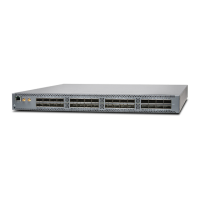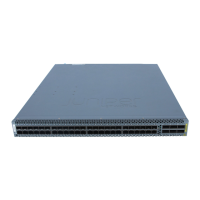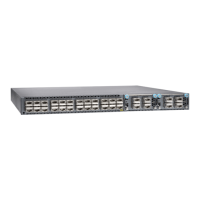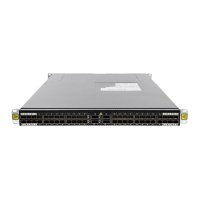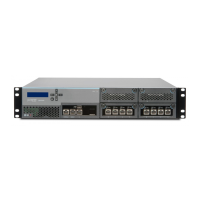Single-mode ber is so small in diameter that rays of light reect internally through one layer only.
Interfaces with single-mode opcs use lasers as light sources. Lasers generate a single wavelength of
light, which travels in a straight line through the single-mode ber. Compared to mulmode ber, single-
mode ber has a higher bandwidth and can carry signals for longer distances. It is consequently more
expensive.
For informaon about the maximum transmission distance and supported wavelength range for the
types of single-mode and mulmode ber-opc cables that are connected to the QFX Series, see the
Hardware Compability Tool. Exceeding the maximum transmission distances can result in signicant
signal loss, which causes unreliable transmission.
Aenuaon and Dispersion in Fiber-Opc Cable
An opcal data link funcons correctly provided that modulated light reaching the receiver has enough
power to be demodulated correctly.
Aenuaon
is the reducon in strength of the light signal during
transmission. Passive media components such as cables, cable splices, and connectors cause
aenuaon. Although aenuaon is signicantly lower for opcal ber than for other media, it sll
occurs in both mulmode and single-mode transmission. An ecient opcal data link must transmit
enough light to overcome aenuaon.
Dispersion
is the spreading of the signal over me. The following two types of dispersion can aect
signal transmission through an opcal data link:
• Chromac dispersion, which is the spreading of the signal over me caused by the dierent speeds
of light rays.
• Modal dispersion, which is the spreading of the signal over me caused by the dierent propagaon
modes in the ber.
For mulmode transmission, modal dispersion, rather than chromac dispersion or aenuaon, usually
limits the maximum bit rate and link length. For single-mode transmission, modal dispersion is not a
factor. However, at higher bit rates and over longer distances, chromac dispersion limits the maximum
link length.
An ecient opcal data link must have enough light to exceed the minimum power that the receiver
requires to operate within its specicaons. In addion, the total dispersion must be within the limits
specied for the type of link in the Telcordia Technologies document GR-253-CORE (Secon 4.3) and
Internaonal Telecommunicaons Union (ITU) document G.957.
When chromac dispersion is at the maximum allowed, its eect can be considered as a power penalty
in the power budget. The opcal power budget must allow for the sum of component aenuaon,
power penales (including those from dispersion), and a safety margin for unexpected losses.
80
